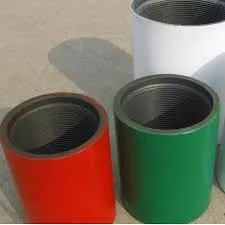- Afrikaans
- Albanian
- Amharic
- Arabic
- Armenian
- Azerbaijani
- Basque
- Belarusian
- Bengali
- Bosnian
- Bulgarian
- Catalan
- Cebuano
- Corsican
- Croatian
- Czech
- Danish
- Dutch
- English
- Esperanto
- Estonian
- Finnish
- French
- Frisian
- Galician
- Georgian
- German
- Greek
- Gujarati
- Haitian Creole
- hausa
- hawaiian
- Hebrew
- Hindi
- Miao
- Hungarian
- Icelandic
- igbo
- Indonesian
- irish
- Italian
- Japanese
- Javanese
- Kannada
- kazakh
- Khmer
- Rwandese
- Korean
- Kurdish
- Kyrgyz
- Lao
- Latin
- Latvian
- Lithuanian
- Luxembourgish
- Macedonian
- Malgashi
- Malay
- Malayalam
- Maltese
- Maori
- Marathi
- Mongolian
- Myanmar
- Nepali
- Norwegian
- Norwegian
- Occitan
- Pashto
- Persian
- Polish
- Portuguese
- Punjabi
- Romanian
- Russian
- Samoan
- Scottish Gaelic
- Serbian
- Sesotho
- Shona
- Sindhi
- Sinhala
- Slovak
- Slovenian
- Somali
- Spanish
- Sundanese
- Swahili
- Swedish
- Tagalog
- Tajik
- Tamil
- Tatar
- Telugu
- Thai
- Turkish
- Turkmen
- Ukrainian
- Urdu
- Uighur
- Uzbek
- Vietnamese
- Welsh
- Bantu
- Yiddish
- Yoruba
- Zulu
well tubing and casing
Well Tubing and Casing Essential Components of Oil and Gas Production
In the oil and gas industry, the extraction of hydrocarbons from the earth is a complex process that involves a variety of technologies and equipment. Among these, well tubing and casing play critical roles in ensuring the safe and efficient production of oil and gas. This article delves into the importance, functions, and types of tubing and casing used in drilling operations.
Understanding Casing and Tubing
Casing refers to the series of pipes that are installed in a well to provide structural integrity and prevent the collapse of the borehole. Once the well is drilled, casing is placed into the well to protect both the wellbore and the surrounding formations. This is crucial as it helps isolate different geological layers, preventing the contamination of fresh water aquifers and minimizing the risk of blowouts.
On the other hand, tubing is the pipe through which oil and gas are produced from the well. After the casing has been set, tubing is installed inside the casing to allow for the efficient transport of hydrocarbons to the surface. Unlike casing, which remains in the well for its entire life cycle, tubing can be removed and replaced as needed, allowing for easier maintenance and management of production.
Functions of Well Tubing and Casing
The primary function of casing is to stabilize the wellbore and prevent the influx of fluids from surrounding formations. It also helps manage pressure within the well, thereby reducing the risk of dangerous pressure buildups that could result in blowouts. Casing can be cemented in place, creating a barrier that ensures the well remains isolated from other layers of rock and fluids.
well tubing and casing

Tubing’s main function is to transport the oil and gas from the reservoir to the surface in a safe and efficient manner. It is designed to withstand high pressures and corrosive substances often encountered during production. Additionally, tubing can aid in the monitoring of well conditions, as specialized sensors can be integrated to track temperature, pressure, and flow rates.
Types of Casing and Tubing
There are various types of casing used in well construction, each designed for specific purposes. For example, surface casing is the initial casing set in the well to protect freshwater zones and provide a solid foundation for further drilling. Production casing is used to facilitate the production of hydrocarbons, while intermediate casing is employed to manage pressure and isolate different geological formations.
Similarly, tubing comes in various designs and specifications, including standard tubing, premium tubing, and heavy-duty tubing. The choice of tubing depends on factors such as the well depth, expected production rates, and the corrosiveness of the fluids being extracted. High-quality materials are essential to ensure durability and functionality throughout the life of the well.
Conclusion
Well tubing and casing are fundamental components of oil and gas production, serving crucial roles in ensuring well integrity, safety, and efficiency. The proper selection and installation of casing protect against environmental contamination and pressure complications, while tubing facilitates the effective transport of valuable resources to the surface. As the industry continues to evolve with advancements in technology and drilling techniques, the significance of these components remains steadfast, underpinning the successful operation of oil and gas wells across the globe. Understanding these elements is vital for anyone involved in or studying the energy sector, reinforcing the intricate balance required in hydrocarbon extraction.
-
Tubing Pup Joints: Essential Components for Oil and Gas OperationsNewsJul.10,2025
-
Pup Joints: Essential Components for Reliable Drilling OperationsNewsJul.10,2025
-
Pipe Couplings: Connecting Your World EfficientlyNewsJul.10,2025
-
Mastering Oilfield Operations with Quality Tubing and CasingNewsJul.10,2025
-
High-Quality Casing Couplings for Every NeedNewsJul.10,2025
-
Boost Your Drilling Efficiency with Premium Crossover Tools & Seating NipplesNewsJul.10,2025







